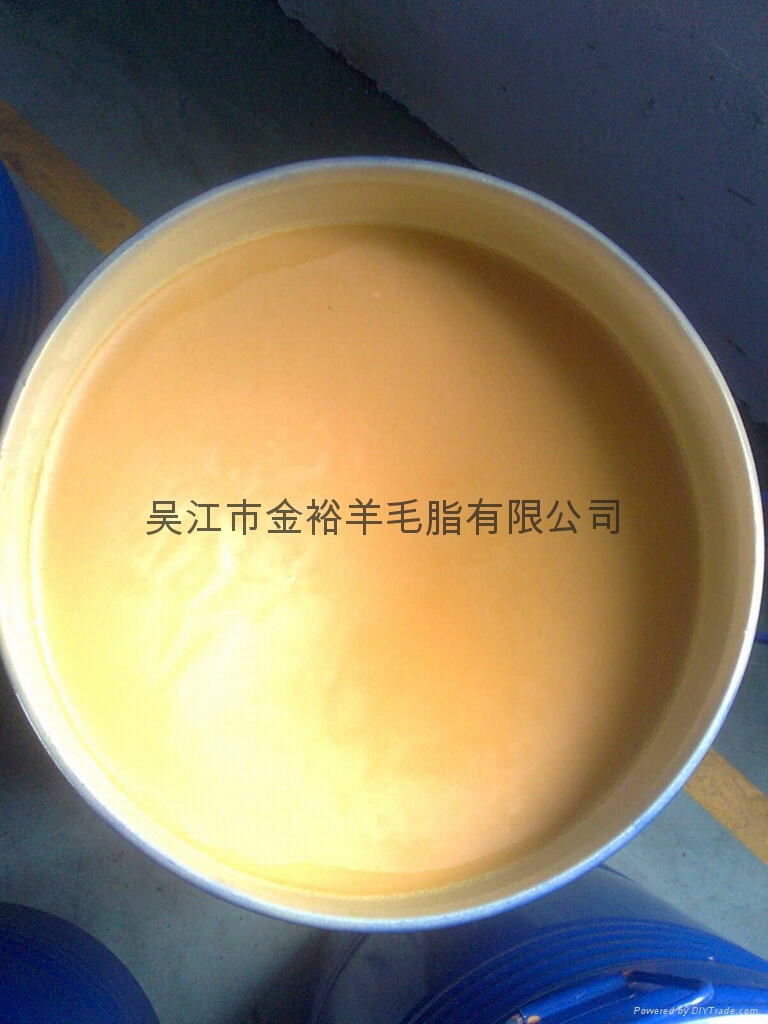While I always knew that lanolin is great for dry skin, but soon discovered that it works wonders for sore nipples when I started breastfeeding my son. Lansinoh makes High Purity Lanolin for Breastfeeding Mothers and claims that its product is safe for both mom and babies (wiping off before feeding is unnecessary). If lanolin is so safe and effective as a skin protecting and healing agent, why is it not used in more beauty products? Reading ingredient labels on some other lotions, I also noticed lanolin oil and linalool are also commonly found. What's the difference between these three similar sounding ingredients? What are their functions and safety concerns? Here's what I came up with after doing some research of my own. Please leave a comment or question to add to the discussion!
Lanolin is a wax found on sheep's wool that protects against the rain and the elements, and has been used to protect skin for more than 2000 years.When the wool is trimmed, lanolin can be harvested by squeezing the wool between rollers, thus no sheep are harmed during its manufacturing process. Although lanolin is a natural, renewable material it is possible for it to be contaminated with pesticides. The United States Pharmacopeia standard calls for a maximum of 40ppm (parts per million) of 34 known pesticides and no more than 10ppm of each type. While allergies to pure lanolin do occur, its frequency is fairly rare. More frequently, people are allergic to the pesticides found in lanolin. Also, much of the fear of lanolin allergy stems from misrepresentation of data from a 1950's study in which 1% of patients with skin disorders were found to be allergic to lanolin. This finding was incorrectly taken as 1% of the general population. Lansinoh guarantees that its HPA® Lanolin for breastfeeding mothers contains less than 1ppm of pesticide residue, which is much lower than the industry standard. The Skin Deep Cosmetic Database gives lanolin a rating of "4, moderate hazard", mostly because of risks associated with allergies and pesticide contamination. In my opinion, if you're using a high purity lanolin such as Lansinoh or Australian Golden Lanolin, there's really not much to worry about.
While lanolin has great healing properties, its waxy consistency makes it difficult to work with when combining with other ingredients. Lanolin oil is derived from lanolin typically by low temperature fractional crystallization, a gentle process that isolates the liquid esters from pure lanolin. Lanolin oil is liquid at room temperature and is soluble in mineral and vegetable oils. It can be used in formulations where lanolin is called for but it provides a lighter texture with less drag. It's also a great emollient and offers protection from skin moisture loss similar to lanolin. Lanolin oil has a "0, low hazard" from Skin Deep Cosmetic Database, which is pretty much the most innocuous rating possible. The lower rating may be due to the fact that lanolin oil is further refined and has lower chance of containing pesticides compared to raw lanolin. Lanolin oil can be used directly on skin to prevent or treat chapped hands or lips, or can be mixed with other ingredients to make beauty products or your own.
Although linalool sounds like it might be related to lanolin, its actually a fragrance derived from plants such as lavender (Lavandula officinalis Chaix,) and sweet basil (Ocimum basilicum). It is a terpene alcohol that has a pleasant floral scent with a hint of spice. While I did not find any references on using linalool as a skin protectant, some products utilize linalool as an insect repellent. One study from Sweden found that oxidized linalool caused 5-7% of patients developed allergic reactions such as ezcema to an oxidized form of linalool. Oxidation of Linalool is classified as a "5, moderate hazard" by the Skin Deep Cosmetic Database. International Fragrance Association Codes & Standard recommends restricting its use in cosmetics, however, reality is that about 60 to 80% of scented hygiene products contain linalool. If you are prone to develop ezcema, I would recommend reading ingredient labels carefully and selecting products that do not contain linalool. Also it helps to avoid purchasing large quantities of scented products and replacing the cap to avoid linalool oxidation.
For more information on this subject, check out these references:
- Overview of lanolin basics including healing properties and refinement process
- Detailed explanation of how lanolin heals wounds, its purification process, and more references
- More info on linalool allergy and prevention
Links to products recommended in this post:





0 komentar:
Posting Komentar